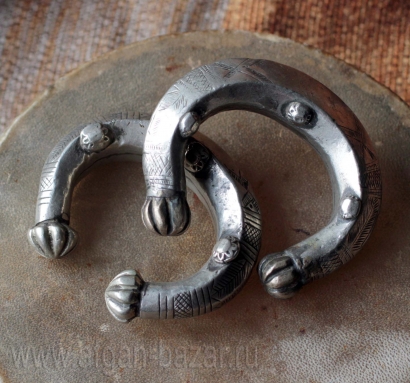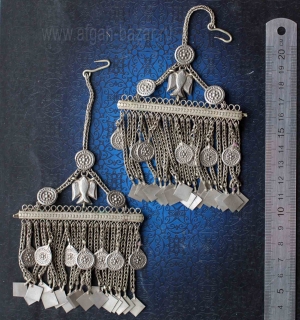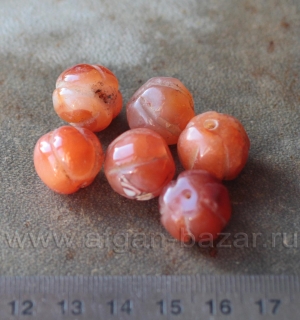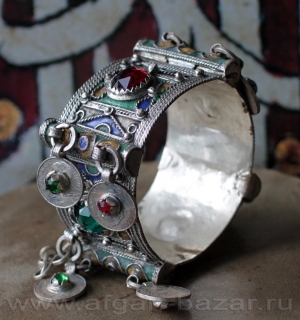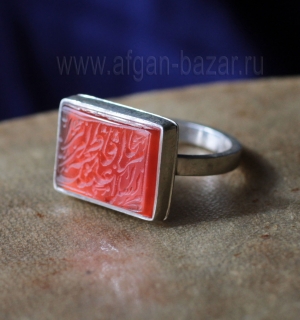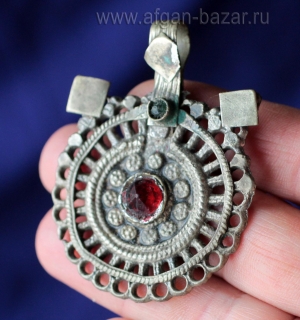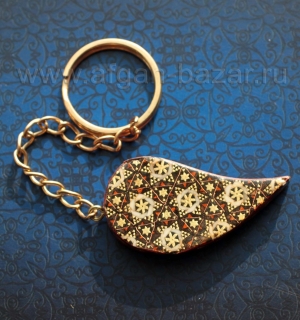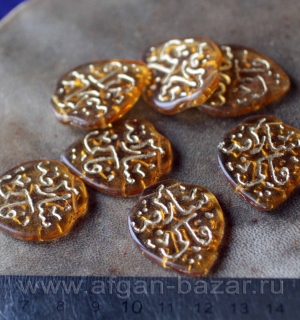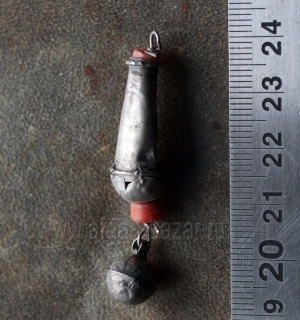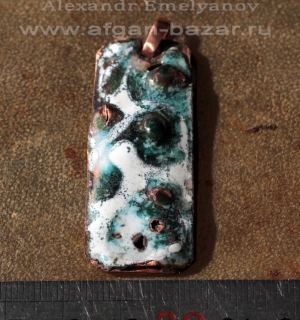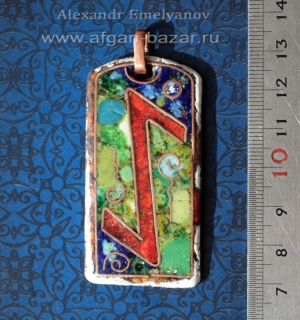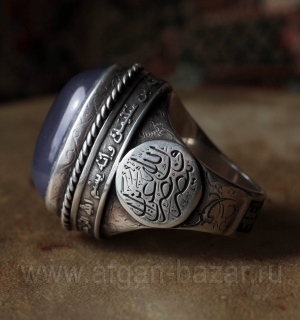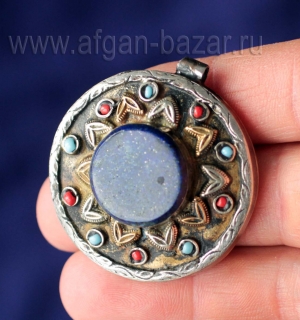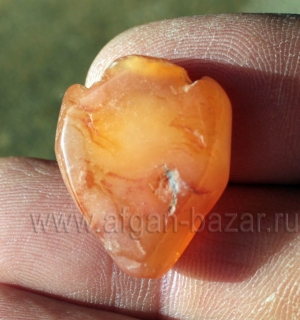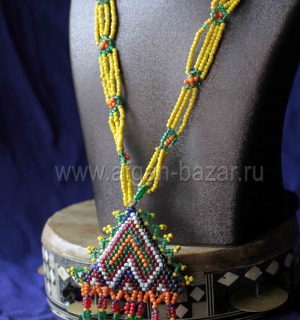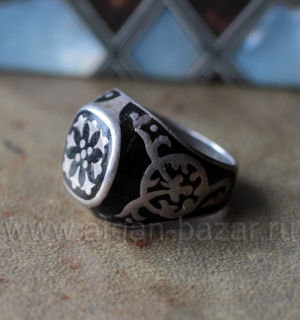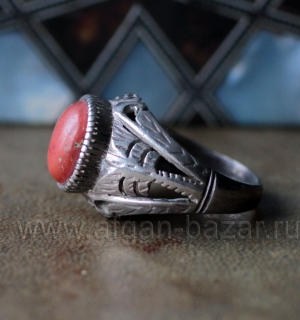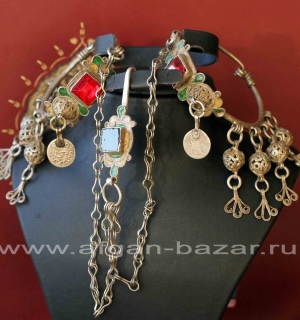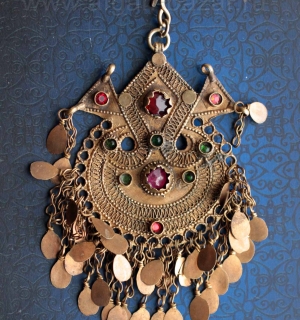Пара традиционных афганских племенных браслетов "чури" или "карра" (пушт.). Северо-западный Пакистан (долина реки Сват), 20 век
Пара традиционных афганских племенных браслетов "чури" или "карра" (пушт.).
Северо-западный Пакистан (долина реки Сват), 20 век.
Металл - сплав, традиционно получаемый при переплавке старых украшений и монет, называемый в Афганистане и Пакистане Альпака (Alpaka), или Гиллит (Gillet), состоящий из никеля, цинка, меди и олова в разных соотношениях.
Выколотка, чеканка, гравировка, напаянные тисненые элементы.
Толщина - 20 мм, расстояние между концами - 24 мм.
Внутренний размер - 53/38 мм.
Общий вес - 142 г.
Цена указана за пару.
Интересна технология изготовления таких браслетов, сохранившаяся многие века в племенах Центральной Азии: - из листа тонкой жести делается трубка и пропаивается по шву. Затем внутрь заливают воск (если металл более толстый - то заколачивают влажную землю). После этого трубку сгибают в незамкнутую окружность и декорируют чеканкой. Наполнитель не дает жести сминаться и деформироваться. После этого наполнитель удаляют (для воска - прокаливанием, для земли - промыванием, хотя иногда земля так и остается внутри). Затем припаивают заглушки с торцов и накладной декор. В завершение проводят окончательную доводку, очистку поверхности, закрепляют стеклянные бусинки с помощью воска.
Pair of Afghan-Pakistani Swat Valley Tribal Metal Bracelet
Collectible museum items.
North-West Pakistan (Chitral, Swat valley).
Kuchi Pashtoon tribes, the middle of the 20th century
Metal alloy, traditionally obtained by melting old jewelry and coins called in Afghanistan and Pakistan "Alpaca", consisting of Nickel, zinc, copper and tin in different proportions mixed with silver or not.
Handmade.
Thickness is 20 mm (0,8 "),
the distance between the ends (opening Gap)- 24 mm (1 ") Non ajustable !!!
internal size - 53/35 mm (2,1/1,5 " )
The internal diameter is about 45 mm. Or 1,8 inches. It means that Whits circle length 150 mm or 6 inches.
Weight of the both - 142 g. (5 Oz).
An interesting technology of making these bracelets, preserved for many centuries in the tribes of Central Asia: - from a sheet of thin tin makes pipe and soldering by the the seam. Then poured inside the wax (if the metal is thicker, then nailed wet ground). Thereafter, the tube is bent in an open circle and decorated with chasing. The filler does not give the sheet to wrinkle and deform. Then the filler is removed (for wax - calcining, ground washing, although sometimes some soil stays inside). Then solder the plug ends and patch decoration. In conclusion, carry out final finishing, surface cleaning, fix glass beads with wax.
Traditional Tribal adornments and its elements from non-precious metals may have small dents, deformation, as well as places to be covered with a layer of patina that is not a defect, and speaks of their genuine antiquity and authenticity.
Литература и аналоги:
1. Karolina Krzywicka. Ethnic Jewellery of Afghanistan. From theAsia and Pacific Museum in Warsaw - Warzawa: 2012. - p. 58-59.
2. Ethnic jewellery from Africa, Asia, and Pacific islands. - Amsterdam and Singapore: The Pepin Press, 2008. - p. 58-59.
3. Alfred Janata. Schmuck in Afganistan. / Janata A. - Graz: Akademische Druck – u. Verlagsanstalt, 1981. - s. 118-119.
Другие товары из этой категории
-
5 950 ₽
-
890 ₽
-
2 150 ₽
-
2 750 ₽
-
12 950 ₽
-
1 650 ₽
-
9 250 ₽
-
0 ₽

